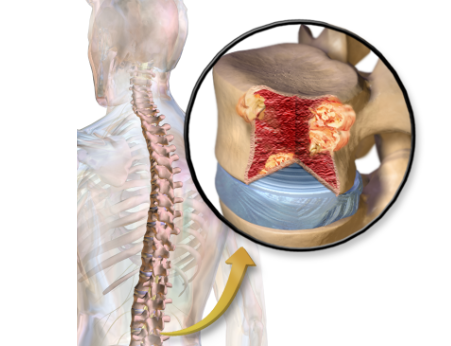

Symptoms
The person who is suffering from this condition may feel many symptoms at once. There are some patients who hardly feel any symptoms, while some patients may feel intense symptoms, and they should be treated immediately.
The most cautious symptom of Multiple Myeloma is bone pain. At first, this happens for a small duration of time now and then. However, the pain progresses in intensity, and after some time, it is felt by the patient constantly. The pain is way worse during the day when the patient has just performed some physical activity or any weight-bearing activity. The other symptoms may involve the reduction of red blood cell count, which is known as anemia, too much protein in the urine, too much calcium in the blood, and kidney failure.
The patient may feel some difficulties arising because of this condition like bone fractures, recurrent infections, nerve damage, amyloidosis, and tumors made up of plasma cells.
Diagnosis
This condition may be diagnosed after a routine blood test for other diseases. However, a sample of cells or bone marrow biopsy may be essential to confirm the diagnosis.
The patient needs to go through a skeletal survey, in which all the bones of the body are X-rayed. Skeletal Survey will not only help in knowing the extent of the disease but also in determining the response of the treatment. It can even predict some possible like fractures.
There can also be a use of other medical imaging techniques to know more information about the condition. Multiple lesions can be detected by MRI, while CT can examine the soft tissue. For the accurate diagnosis of Multiple Myeloma in any patient, the doctor may need to inquire about several factors, medical history, lab results, and physical examination.
Treatment
This condition is said to be incurable, but there many ways to extend the life of the patient. For the reduction of the severity of the symptoms and slowing the progress of the disease, chemotherapy can be used. There is also a drug called bisphosphonates, which are administered to promote bone healing and prevent the loss of bone density. You may be treated with erythropoietin if you are suffering from anaemia. Erythropoietin is a hormone that stimulates the production of red blood cells.
Advanced treatment is stem cell harvest, in which a stem cell is transplanted in you after you have gone through a bone marrow ablation. The use of radiotherapy or chemotherapy is usually accompanied by bone marrow ablation. This approach has positive results.
Multiple Myeloma is a condition that is very sensitive to radiation. Treatment is usually focused on treating the lesions, which are causing pain or discomfort.
There also many minimally invasive techniques like bone augmentation techniques. In this technique, cement is inserted in the area, which is surrounding the fracture to stabilize it. Thus, it improves mobility and reduces pain. In this treatment, the tumor cells are destroyed, and imaging can also be used to control individual tumors.
Dr Nikolas Charalambous is named among the most prominent interventional radiologist. Get a free consultation for a minimally invasive treatment of brain, neck, and spine.